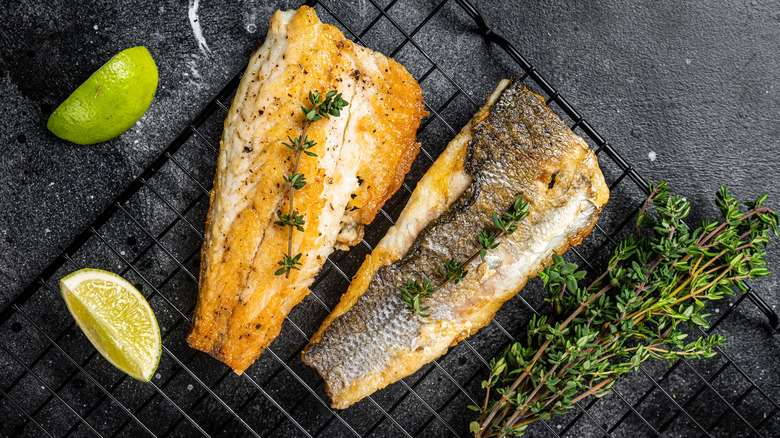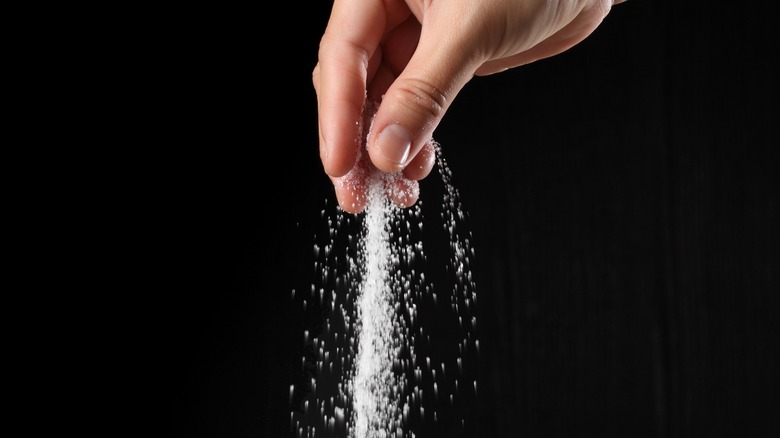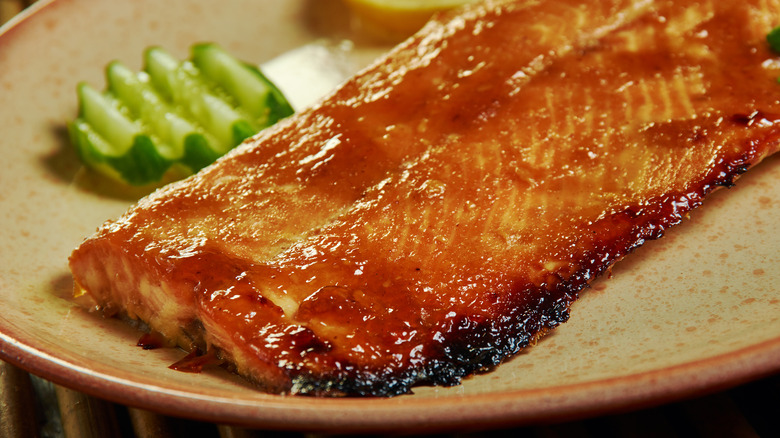A Pinch Of Sugar Is The Unexpected Secret To Game-Changing Fish
Cooking fish can be a tricky culinary art. Prone to being either overcooked and dry or undercooked and fleshy, without the proper preparation, you can indeed ruin fish quite easily, resulting in a dish that leaves much to be desired in flavor and texture. But the good news is that no matter the exact method of cooking, there is an infallible hack for preparing fish that ensures that your filets turn out moist, thoroughly cooked, and with a delightfully crispy skin and interior texture with just the right amount of flakiness. All you need to do is add some sugar.
It turns out that adding just a pinch of sugar to the surface of your fish filets before cooking them is the secret to well-crisped skin and fish that isn't dried out. In addition, whether you're cooking a white, flaky fish (such as cod) or a firmer fish (such as a tuna steak or halibut), the light sugar layer is one of the best ways to make your fish taste incredible, providing a delicious layer of caramelization for a perfectly browned exterior and buttery essence. Trust us, if you're planning to cook fish filets, you'll want to make this step one of your golden rules.
Adding sugar to your fish filets
To coat your fish filets for cooking, you can stick with regular white sugar or try brown sugar, which has more moisture than its white counterpart and will deliver an optimally moist filet. Whichever sugar you use, you'll simply sprinkle a little — ½ teaspoon of sugar per pound of fish — onto your filet and sear the sugared side before turning it over and popping it into the oven at 425 degrees or higher to finish cooking. The result? A deliciously crisp exterior with a hint of caramelization that will develop quickly, as sugar caramelizes at lower temperatures. Worried about the possibility of sugary tasting fish? Don't — the sugar won't leave too noticeable a sweet taste but will offer a subtle and complementary flavor boost that will help balance out the flavors so your fish doesn't taste too fishy.
Alternatively, for optimal texture, add some salt to that sugar. If you blend 1 part sugar to 2 parts salt, the cure will help enhance the flavor of your fish in addition to producing a firmer, less soggy texture with crispy, browned skin. But instead of cooking your filets with the blend on top, you'll want to leave it on both sides of your filets for 15 minutes to an hour, then rinse and pat dry — this is enough for the salt and sugar to remove the excess moisture from the surface of your filets for a more ideal, non-mushy texture and delicious flavor.
Delicious flavor pairings for your sugar-coated fish
Luckily, there is a wide variety of flavors that will enhance the taste of that sugar-coated fish. For example, if you're looking for an Asian-inspired dish, why not add some soy sauce and minced garlic to make a delicious glaze for your fish? The saltiness and umami flavor of a soy sauce glaze will pair beautifully with steamed vegetables or even plain white or brown rice, which will provide a simple, versatile base for the sweet-salty flavor combo. It's one of the most delectable ways to use soy sauce in your cooking. But be sure to wait until your fish is almost finished cooking to baste with your glaze so you don't burn it.
Alternatively, for a delectable Cajun-inspired fish, go ahead and season with onion powder, cayenne pepper, cumin, and paprika, which — particularly if you've used brown sugar — will combine to make a seriously savory addition to a salmon or sea bass. You can even add a tablespoon of blackened seasoning for an extra zesty kick.


